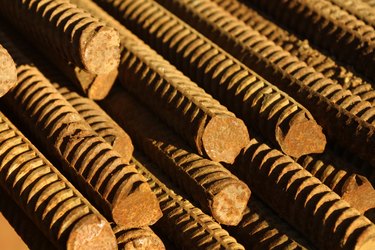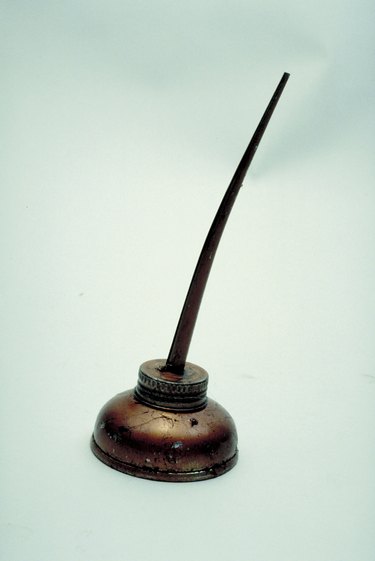Things You'll Need
Tape measure
Axle material (wooden dowel, galvanized pipe, metal conduit, rebar or other cylindrical, solid, strong material)
Saw (crosscut saw, hacksaw, circular saw or reciprocating saw for cutting metal)
Drill
Drill bits for either wood- or metal-boring
Cotter pins or bolts and screws
Grease or lubricating oil
Pliers

You can use many different types of materials to construct a wheelbarrow axle. If you are building the entire wheelbarrow yourself, you might consider making the axle out of the same type of material you are constructing the rest of the barrow out of, such as metal or wood. Whatever material you decide upon, make sure it's a strong and durable material. Much of the burden of a wheelbarrow's load falls upon the wheel and axle. A failing axle can cause injury to the user or others if you're trying to move a heavy load. With a few basic tools and supplies, you can build a wheelbarrow axle on your own.
Preparations
Step 1
Measure the length of the wheel and the frame arms that support it. Add about 1 inch to either side to allow for attaching the pins or bolts to hold the axle in place once it's installed.
Video of the Day
Step 2

Measure the diameter of the wheel's center hole, where you'll insert the axle. This will dictate what type of material may be best suited for the axle. Wooden dowels come in many diameters as does metal pipe and conduit; the available widths of rebar are limited.
Step 3
Cut the material to size, remembering to allow for the extra width on each side. A crosscut saw or circular saw is best for cutting wooden dowels, but a hacksaw or reciprocating saw will perform best for metal pipes, conduit or rebar.
Installing the Axle
Step 1

Lubricate the axle with grease or a lubricating oil prior to installing it. This will make installation easier and will make using the wheelbarrow much easier as well.
Step 2
Place the wheel between the frame arms, and insert the axle through one frame arm, through the wheel and the other frame arm of the wheelbarrow. Make sure that the amount of overhang on each side is roughly equal.
Step 3
Drill a hole through each end of the axle, approximately 1/4 inch to 1/2 inch in from the ends. The diameter of the hole should be the same as the bolts or cotter pins you're using.
Step 4
Insert the bolts or cotter pins through the holes. Tighten nuts onto the bolts with pliers, or use pliers to bend the ends of the cotter pins.
Step 5
Perform maintenance on your wheelbarrow and axle at least annually. Tighten or replace the bolts or pins and relubricate the axle.
Warning
Always exercise caution when using any power tool.
Video of the Day